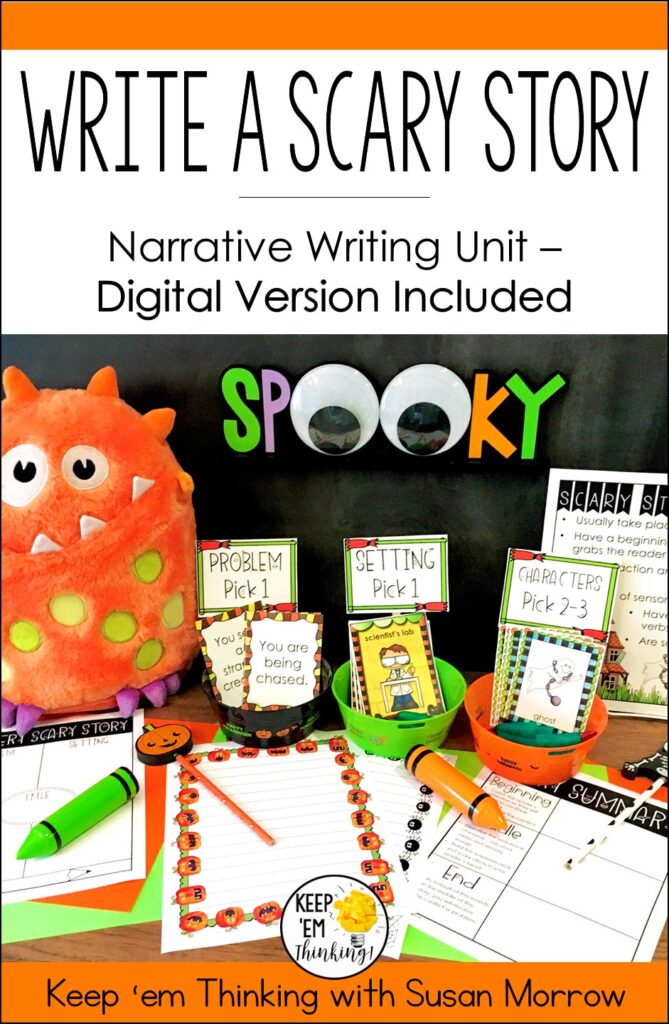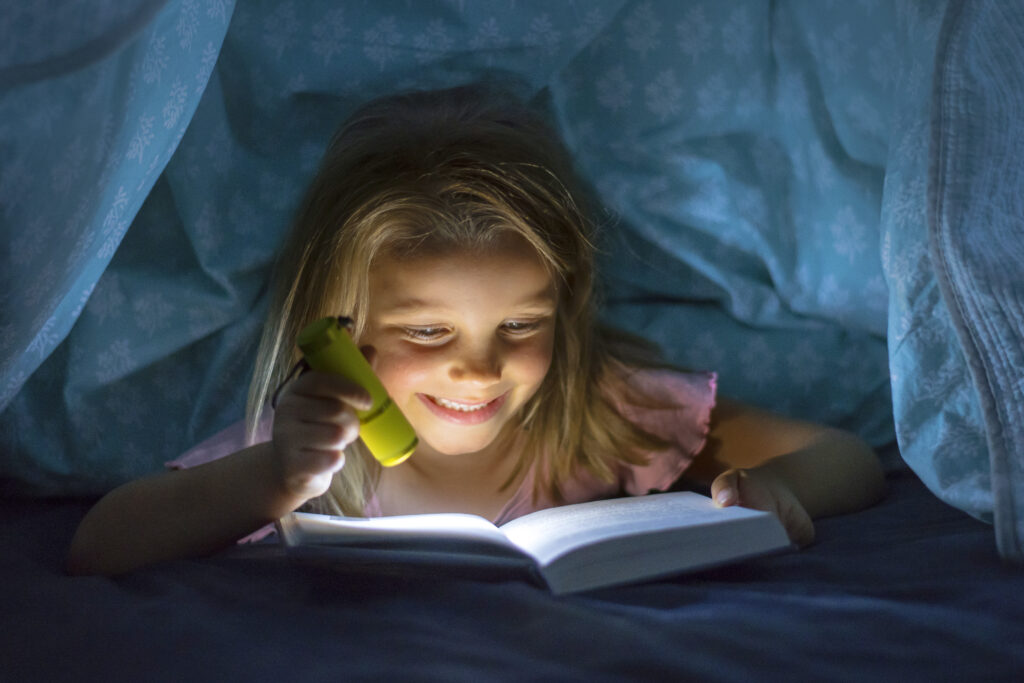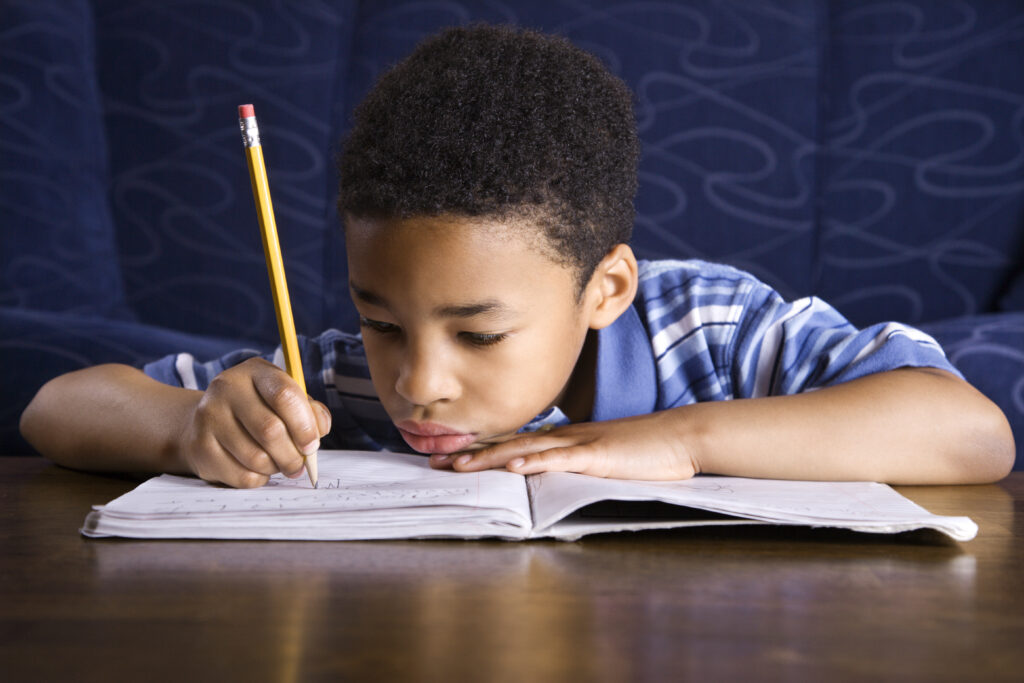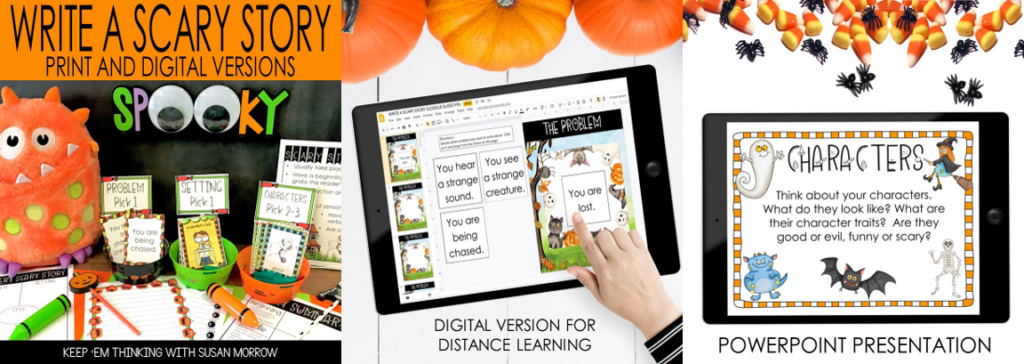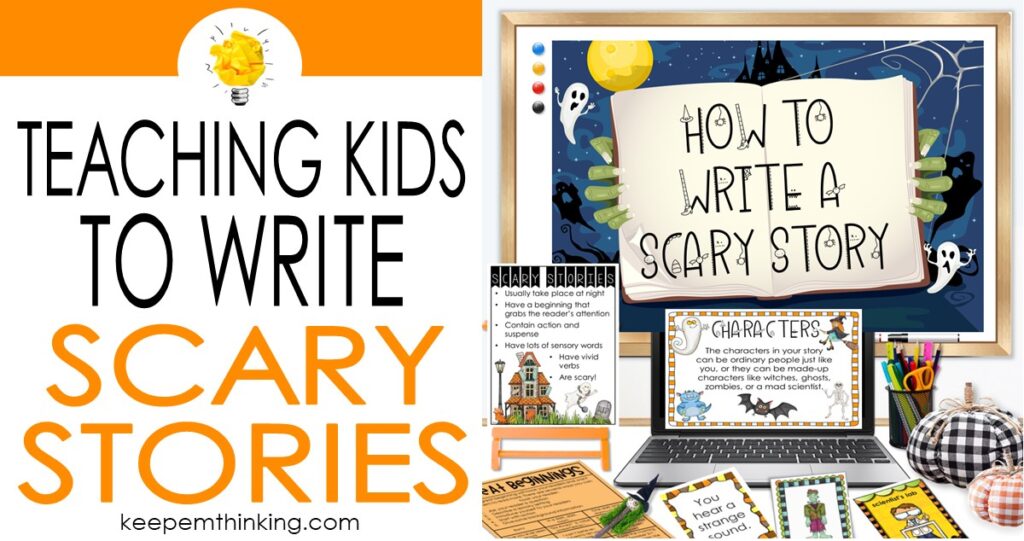
You’re terrified. Your heart is pounding, and your chest feels like it’s going to EXPLODE! You breathe faster and faster as sweat drips from your shaking hands. Are you going to die? NO. You’re just listening to a SCARY STORY.
Being scared is exciting, right? If it wasn’t, why would we go on haunted hayrides, watch scary movies or ride roller coasters?
Let’s face it, in each of these circumstances, we know we’re pretty safe. And when the experience is over, the thrill isn’t. Just watch a group of kids coming out of a haunted house at the fair. They’re shrieking and laughing at the SAME TIME. And, because they know the fear is SAFE, they scramble to get in line again. They’re experiencing a fear-induced NATURAL HIGH. That’s because being scared causes an adrenaline rush in your body and creates a feeling of EUPHORIA.
Enter SCARY STORIES! When it comes to teaching your students how to write a scary story that will keep readers or listeners on the edge of their seats, nothing beats a good old-fashioned scary story.
Kids love the element of surprise and the unexpected. It’s fascinating to talk about monsters, ghosts, or anything weird! Reading and writing these stories is reassuring to kids. The creepy stuff is just fiction, and it’s not a part of their everyday lives. It’s IMAGINATION.
Over the years, I’d teach my students how to write scary stories. But, I was disappointed by the majority of the stories I got. I tried different writing prompts, using scary pictures, anything I could think of. None of that worked. To be honest with you, I got some pretty crummy stories. I knew my kiddos were capable of more. I refused to give up! Finally, through trial and error, I developed a formula that worked for me. It’s just two magic words: CHOICE and TOOLS.
I provided my kids with a buffet of plots, settings, and characters. They were intrigued.
Suddenly they had the FREEDOM to concoct a story that was guaranteed to spook their audience. They didn’t have to respond to the same writing prompt.
The graphic organizers helped them plan and organize their stories, develop their characters, and use descriptive words in their writing. Keeping students engaged in writing is foolproof when they choices and the tools to plan and write a great scary story.
Scary Story Elements
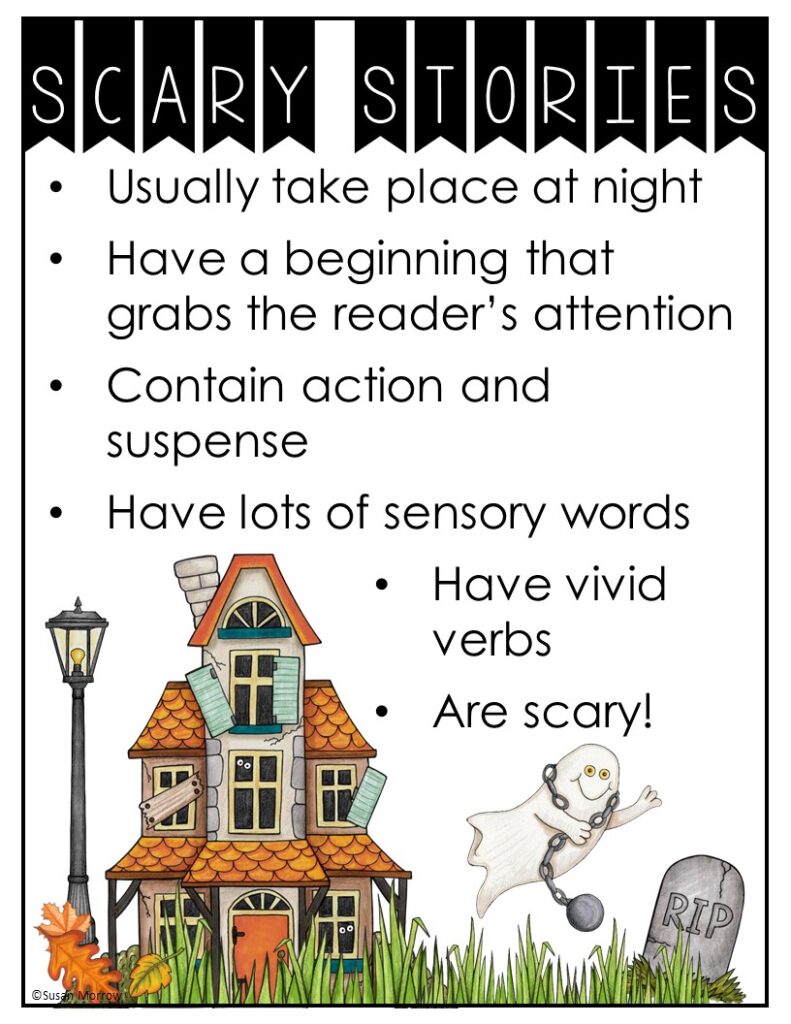
Scary Stories:
- Amp up the fear factor.
- Add cringe-worthy thoughts like a darkness that foreshadows an unknown danger.
- Have characters that get into terrifying situations by breaking the rules, making bad decisions, or ignoring a warning.
- Include a terrible problem that is creating a mood of doom.
- Are usually set in someplace spooky and often takes place at night.
- Include a wide variety of sensory words.
- Contain mystery and suspense.
- Might be unpredictable – setting the reader up to expect one thing but then providing something else.
Setting the Stage

Nothing sets the tone for writing better than turning out the lights and reading a couple of scary stories. Here are a few of my favorite scary stories for younger kids.
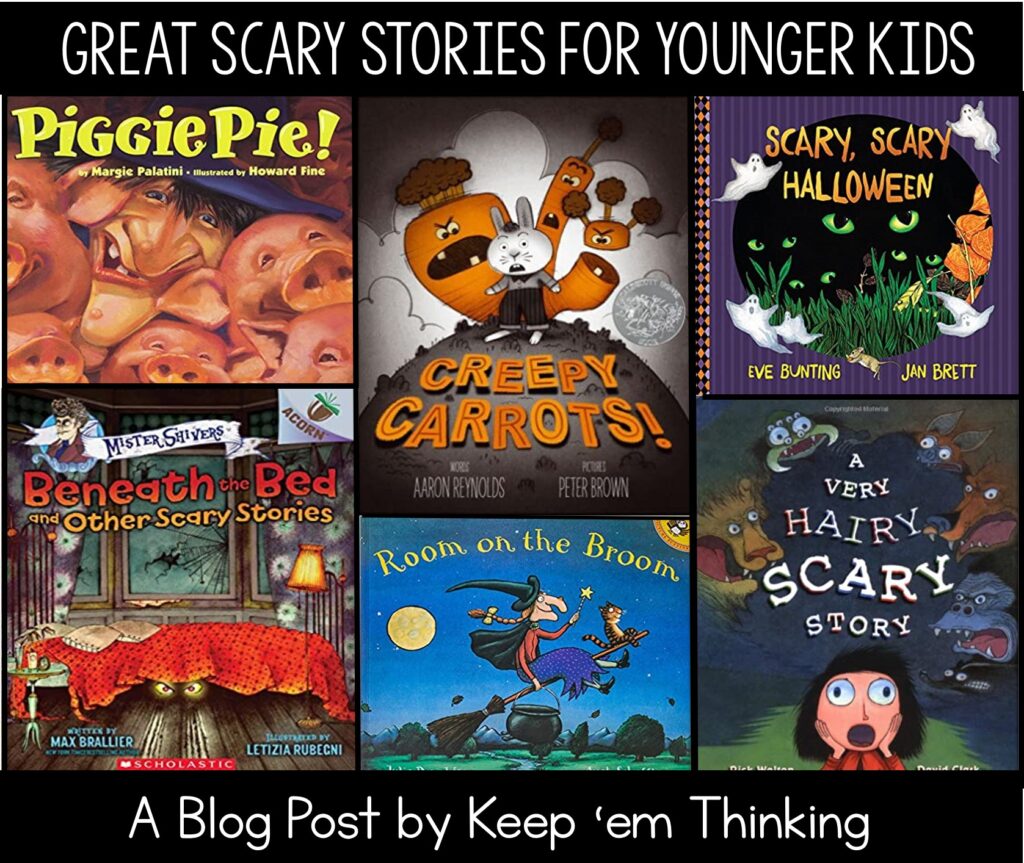
PICTURE BOOKS:
- The Teeny Tiny Woman by Paul Galdone
- There’s a Nightmare in my Closet by Mercer Mayer
- There’s an Alligator Under My Bed by Mercer Mayer
- A Very Hairy Scary Story by Rick Walton
- Beneath the Bed and Other Scary Stories by Max Brallier
- In a Dark Dark Room by Alvin Schwartz
- The Little Old Woman Who Was Not Afraid of Anything
- Room on the Broom by Julia Donaldson
- Piggie Pie by Margie Palenti
- Creepy Carrots by Aaron Reynolds
- Ghosts! Ghostly Tales From Folklore by Alvin Schwartz
- Tell Me a Scary Story but Not Too Scary by Carl Reiner
- Scary, Scary, Halloween by Eve Bunting
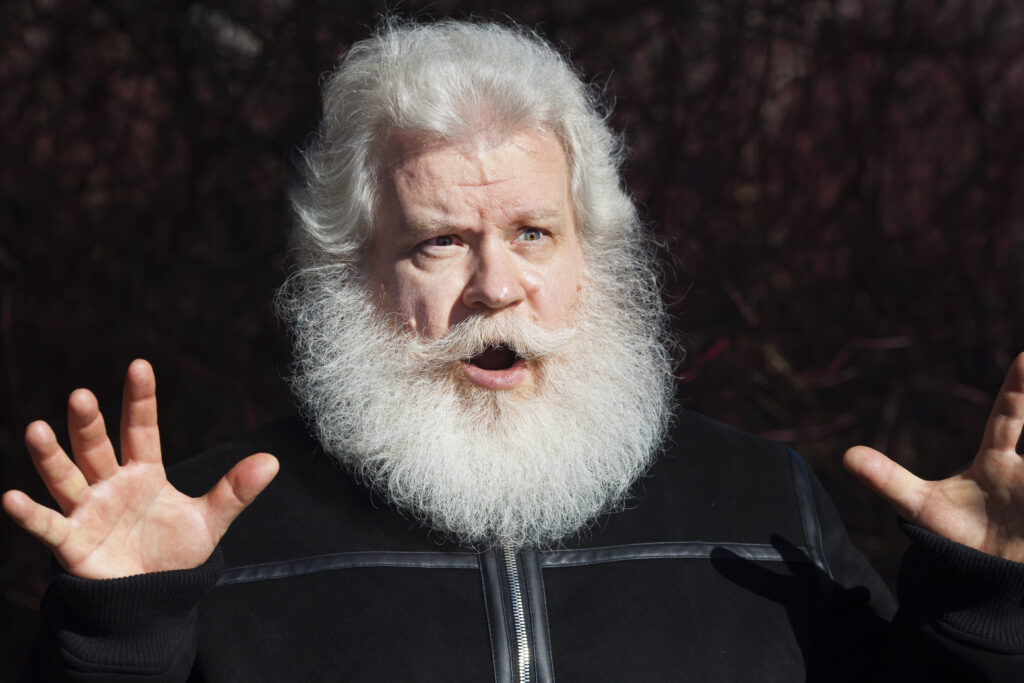
One year, I took my kiddos to a Tale Telling Festival in Selma Alabama. My kids were on the edge of their seats listening to master a storyteller regale them with tales from the book Thirteen Alabama Ghosts and Jeffrey.
If you can’t make it to a storytelling festival, expose your students to a few videos of storytellers telling scary stories to get a sense of the mood these stories elicit.
Videos provide your students with the opportunity to experience how professional authors play with the readers’ emotions through their choice of WORDS, VOICE, and FACIAL and HAND expressions. One of my favorites is Jackie Torrance telling The Story of Tillie
How to Write the Scary Story

Have you ever tried to teach without a lesson plan? It’s quite frustrating and chaotic isn’t it? You need a PLAN. The same thing is true for your kids. Some of your kids have minimal experience in writing stories. They don’t even know where to begin. They need a plan!
That’s where you come in! By providing supports and structure, your students will write fantastic scary tales. Writing a great story takes time, so if you only have one class period for your kiddos to write, you’re probably not going to get great stories. The time frame from start to finish to sharing takes my kids about a week to complete.
Writing Steps
Here are the steps I use with my students. Depending on the age and degree of writing experience, your students may not need to spend much time on each step.
First, students BRAINSTORM story ideas for things and places that scare them. This is a fun and easy step because kids LOVE to talk about being scared. It’s also good for kids to see that some of their friends are afraid of the same things they are. Be prepared, you might hear some things that you can’t imagine being afraid of. For example, my grandson was TERRIFIED of going to visit my mother in her assisted living facility. He thought all the “old folks” looked like evil creatures. Thankfully, he got over that.
Next, students select a setting, problem, and characters for their story. To help my kids out, I give them choices and ideas to get them started. I provide them with SETTING, PROBLEM, and CHARACTER cards to choose from. By taking note of what your kids shared during the previous BRAINSTORMING SESSION, you have some great ideas to write on the cards.
In the next step, students organize their thoughts using a story elements organizer and a story summary organizer. With these organizers, students plan the story and make sure it has a logical sequence.
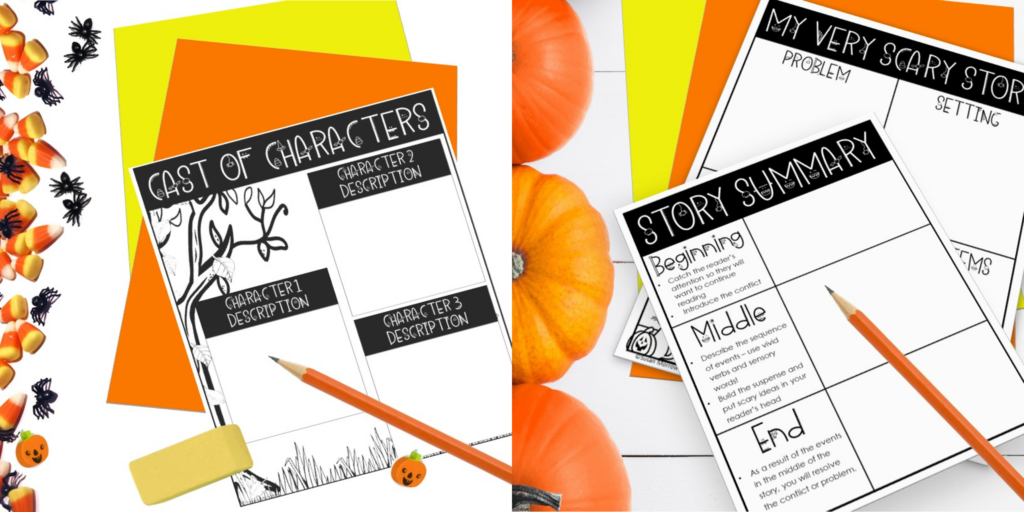
Giving students copies of word lists helps them choose sensory words, sound effects (think Ontomontopeia), and vivid verbs to add to the writing.
Have you ever had kids who wrote a narrative and every sentence began with “and then?” Since scary stories are NARRATIVES, I make sure they use a TRANSITIONS WORD LIST to help them with word choice. That way I don’t have to read “and then,” “and then” over and over again.
Let the Writing Begin!
You’ve laid the groundwork. Your kiddos have a recipe for their story. Now it’s time to put pen to paper and START WRITING. For a first draft, I usually have my kids write on every other line. That way it’s easy to make edits during the revision stage.
Next, have a peer and or a teacher review the rough drafts. It’s also helpful to give the kiddos a checklist to make sure they included all the elements for a scary story.
Finally, revise and edit. This is the kids’ LEAST FAVORITE STEP. They want to write their stories ONCE and be done with it! I try to make it more fun by having a little revising party in the class. Give out stickers and turn on some creepy music. If your students have not had experience with peer editing, you can be the editor. A little hint: Tell at least 2 things you really like about the story BEFORE you may suggestions for improvement.
Oops! We’re not done yet! The most overlooked step is REFLECT AND EVALUATE! Give your kids a writing rubric that is completed by both the student and yourself. I always have my kids share what they think they did best first, and then what they need to improve upon in the comments section of the rubric.
Sharing Your Scary Stories
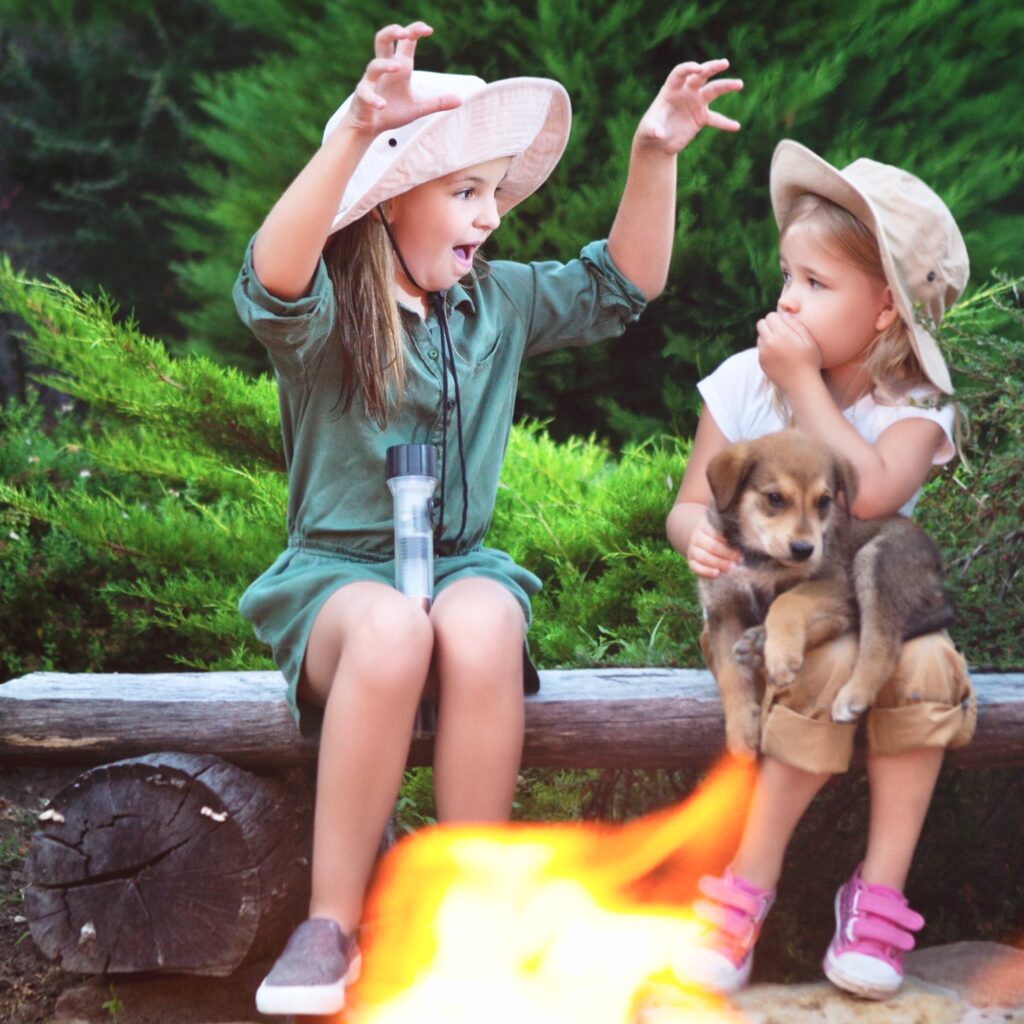
The most fun is when the kids get to share their own stories. This is the time when my friends say I put on a DOG AND PONY SHOW. But seriously, your kids are super pumped about sharing after learning how to write a scary story.
It’s time to celebrate all their hard work. Have the kids dress up in costumes. Make s’mores. I bought a fantastic electric s’mores maker on Amazon. Turn out the lights, play some spooky music. The piece de resistance is a fake classroom campfire for your kids to sit around.
When it’s time to share his story, I give each kid a flashlight. Remember, it’s important to encourage the kids to ham it up with sound effects, facial expressions, and tone of voice.
Creating a Classroom Campfire
You can find numerous blog posts with instructions for building a classroom campfire. Just do a search on Pinterest. Basically, all you need is:
- rocks in a circle
- sticks in the center of the ring of stones
- battery-operated Christmas tree lights to place under and around the sticks
- some orange, red, and yellow tissue paper for the flames.
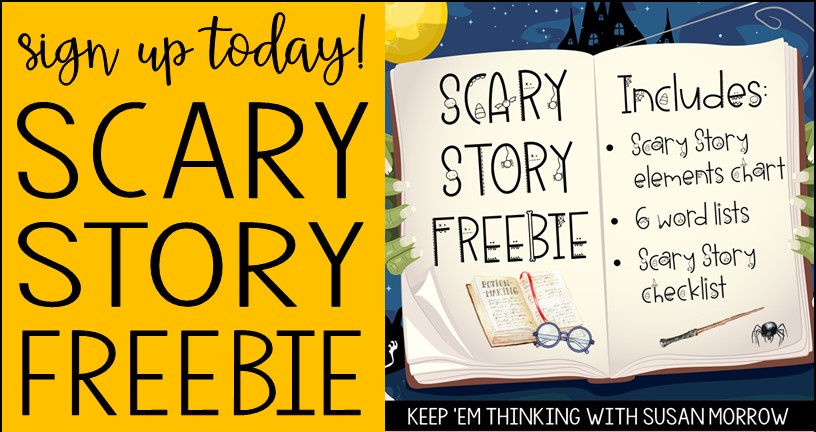
Avoiding Overwhelm When Teaching How to Write a Scary Story
Does this all sound like a lot of work to you? Don’t worry! I’ve got you covered. You can purchase my Write A Scary Story unit on TpT. It includes a PowerPoint on how to write a scary story, all the handouts, cards, rubric, graphic organizers, and everything else you need to teach this unit. There is also a Distance Learning Version you can use if you are teaching remotely!
I’d love to hear how your scary stories turned out! Come back comment to let me know!
PIN FOR LATER
